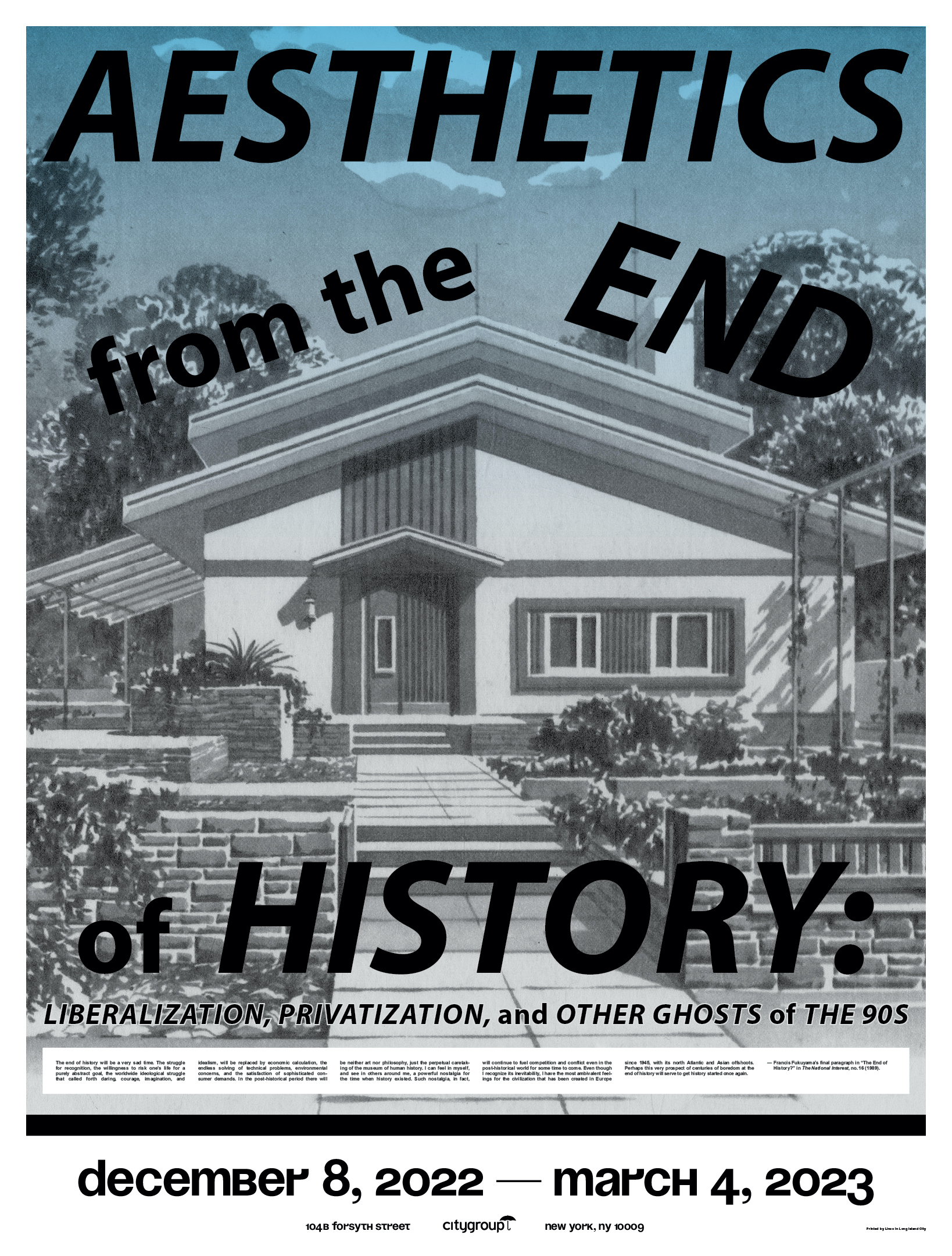
Aesthetics from the End of History: Liberalization, Privatization, and Other Ghosts of The 90s
AJ Artemel, December 8 – March 4, 2023
Events:
Exhibition talk and discussion: January 21, 5–7pm
"Breaks and Continuities: Spatializing Transition in Astana" by Maia Adele Simon: February 4, 5–7pm
About:
It’s amazing what you can find in a Washington DC-area book sale. The office libraries of lobbyists, analysts, military strategists, and diplomats often end up here after a retirement party or estate sale, the accrued production of think tanks and special interest groups. Over the past decade, the detritus of the early 90s has washed up on this book-sale shore. Collected here in a reading room, this material takes us back to the end of history, and the beginnings of a 33-year era of liberalization and privatization that now seems to be faltering. The gathering of this material into one space is an attempt to conjure the spirit of that time, and to understand the aesthetic and tonal methods by which ideologies and policies of liberalization and privatization were marketed to audiences around the globe.
Among the more poignant artifacts are some late-Soviet architecture books that provide templates to design and build private suburban homes. “There are new economic relations between the state and its citizens,” a Kazakh book from 1991 declares. “One by one, the prohibitions that seemed until recently insurmountable and unshakable disappear, including our attitude to private property and the participation of each person in solving their daily worries—How to organize life? How should one be housed? What form of activity should one engage in?” Now distanced three decades from publication, one can read beyond the optimism to feel an immense chasm opening between a past and a future, a significant discontinuity and the unsettling of a familiar way of life.
In the West, too, this moment was one of disjunction: a culture geared toward projecting soft power and a military-bureaucratic apparatus designed for competing in the Cold War suddenly fell into a vacuum of purpose. “The end of history will be a very sad time,” Francis Fukuyama wrote in 1989. “The struggle for recognition, the willingness to risk one’s life for a purely abstract goal, the worldwide ideological struggle that called forth daring, courage, imagination, and idealism, will be replaced by economic calculation, the endless solving of technical problems, environmental concerns, and the satisfaction of sophisticated consumer demands.”
Arranged in a series of thematic groupings, the featured publications range from post-Soviet manuals for suburban housing design and construction to World Bank housing privatization reports, self-help literature to the town planning philosophy of Prince Charles, SimCity manuals to maps of Bosnia. They document US and UN interventions, provide methods for incorporating the "Newly Independent States" into global economic and political networks, advertise credit cards and yachts, and offer advice for expressing oneself through art. The graphics reveal compelling sales pitches, boast neoliberal confidence in the pragmatic seeds of plans, and construct a program for an inevitable global project. These media objects also show flashes of alternate paths not taken, memories of what was lost, and moments of delight at a world opening to travel and closer communication.
Poster design by Willis Kingery